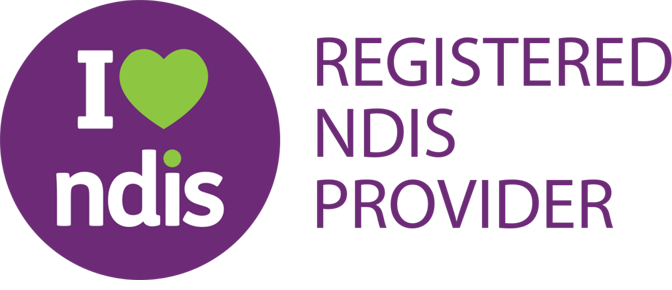How to Use NDIS Funds for Transport: Tips for Traveling with a Disability
How to Use NDIS Funds for Transport: Tips for Traveling with a Disability
For individuals with disabilities, accessible transport is a critical part of gaining independence and participating fully in community life. Whether it’s for medical appointments, social activities, work, or education, having reliable and safe transportation options is essential. Fortunately, the National Disability Insurance Scheme (NDIS) provides participants with funding to help cover transportation costs, ensuring that mobility challenges do not stand in the way of achieving personal goals.
In this blog, we’ll guide you through how to use NDIS funds for transport and offer tips for ensuring safe and accessible travel.
How Can NDIS Funds Be Used for Transport?
Under the NDIS, transport funding falls under the Core Supports category. However, there are specific guidelines on how transport funding can be used, and it’s important to understand what is covered and how you can apply for it.
1. Transport for Medical Appointments and Essential Services
If you are unable to use public transport or drive yourself due to your disability, NDIS funding can be used to cover transport to and from medical appointments, therapy sessions, or essential services. This includes appointments with specialists, allied health professionals, or any service necessary for your disability-related needs. These services are considered essential because they directly contribute to improving your health and well-being.
2. Transport for Social and Community Participation
NDIS funding can also help with transport costs related to social and community participation. This includes travel for social events, educational programs, employment, or any other activities that help you engage with your community and lead a fulfilling life. Social inclusion is a significant goal of the NDIS, and helping you get to activities is part of that focus.
3. Transport for Employment and Education
If you are employed or studying, and your disability makes it difficult to use regular public transport, the NDIS can help cover the cost of getting to and from work or educational institutions. This might include taxis, ride-sharing services, or other forms of transport that are more accessible or suitable for your specific needs.
What Is Covered Under NDIS Transport Funding?
The NDIS funding for transport is not a blanket subsidy for all travel; it must be directly related to your disability. Here’s what you need to know:
• Transport to essential appointments: Travel for medical appointments, therapies, or disability-related support is typically covered.
• Social and recreational activities: Transport funding may cover travel to social or community participation events, such as group activities or volunteering.
• Support worker transport: If you require a support worker to accompany you to appointments or events, their travel may also be funded.
However, general travel for leisure or non-essential purposes, like personal vacations, is not covered by NDIS transport funding. The travel must be connected to your disability and support needs.
How to Access Transport Funding through NDIS
The process of accessing NDIS transport funding is straightforward but requires clear documentation and communication with the NDIS. Here’s how to navigate the process:
1. Talk to Your NDIS Planner
When your NDIS plan is being created or reviewed, it’s important to discuss your transportation needs with your NDIS planner. Be specific about how your disability impacts your ability to use regular transport options, and outline why accessible transport is essential for achieving your goals. For example, if your disability makes walking long distances or using public transport difficult, ensure this is clearly communicated.
2. Identify Your Transport Needs
Before your NDIS planning meeting or review, take some time to identify your transport needs. Make a list of the places you need to go regularly (e.g., medical appointments, work, social activities) and consider how often you’ll need transport assistance. This will help you accurately estimate the amount of funding you require.
3. Provide Supporting Documentation
To help the NDIS understand your needs, provide supporting documentation, such as:
• Letters from doctors or specialists outlining the nature of your disability and its impact on your mobility
• Assessments from occupational therapists or physiotherapists that describe your ability to travel independently
• Travel records showing the cost of accessible transport services you’ve used in the past
These documents will help justify the need for transport funding and ensure that the NDIS can approve the necessary amount.
4. Choose the Best Transport Options
Once you have access to transport funding, it’s time to choose the most suitable transport options. Depending on your needs, this could include:
• Taxis or ride-sharing services (e.g., Uber, DiDi) that are wheelchair accessible or allow for specific requirements like extra space for a support worker.
• Community transport services: Some local councils or disability service providers offer specialized transport for people with disabilities. These may be subsidized or offered at a lower cost than traditional taxis.
• Private car hire: For individuals who need tailored support, private transport services may be necessary.
• Public transport: In some cases, public transport may be an option, but it will need to be accessible for your specific needs. NDIS funding may cover the cost of accessible public transport options, such as buses, trains, or trams, if you are unable to use regular services.
5. Keep Track of Your Transport Costs
It’s important to keep a record of your transport expenses to ensure that you are staying within your NDIS funding limits. For every transport claim, you may need to submit receipts or invoices as proof of the service used. This will help ensure that you are using your funding appropriately and help with future budget planning.
Tips for Safe and Accessible Travel
Traveling with a disability requires careful planning to ensure safety and accessibility. Here are a few tips to keep in mind:
• Plan ahead: Always plan your travel route and transport options in advance to ensure you can access accessible vehicles or services on time.
• Know your rights: Familiarize yourself with disability access rights in transport. For instance, public transport must be accessible to people with disabilities, and drivers are required to assist when necessary.
• Travel with a companion: If needed, consider traveling with a family member, carer, or support worker for assistance during your journey.
Conclusion
Using NDIS funds for transport can significantly improve the mobility and independence of participants, enabling them to access essential services and engage in their communities. By working with your NDIS planner, identifying your transport needs, and choosing the best transport options, you can make the most of the funding available. Safe and accessible travel is key to maintaining independence and achieving your personal goals, and with the right support, the NDIS helps ensure that no one is left behind due to mobility challenges.
Physiotherapists help both prevent and treat injuries. They can treat several problems caused by an injury, disability, or disease. To.
What is a Regional Area Coordinator? At 9D Care, our biggest priority is ensuring that our participants are well taken.
One of the key sectors of NDIS services is support coordination. We highly recommend that our participants who have the.
Let’s first understand the role of a Support Coordinator. The role of a Support Coordinator revolves around assisting individuals in.
For individuals with disabilities, the National Disability Insurance Scheme (NDIS) serves as a vital foundation, offering formalised support. The journey.
If you enjoy assisting others and attending to their needs, working as a support worker could be a fulfilling career.
Our team can come to you to discuss face to face your needs and discuss how we can best support you to achieve your goals. Contact us today to arrange an appointment.








